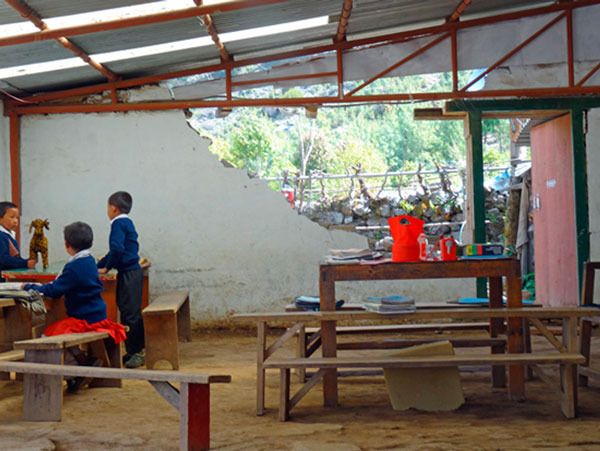These are some of the thoughts that may have crossed through your mind in the last few months.
You almost certainly heard about the earthquake in Nepal. You may remember that Nepal already was a country struggling with many problems. Of course, you certainly realize that the earthquakes only made life tougher in Nepal.
Death! Destruction! Devastation! Disruption! Dislocation!
All of this, and more, was visited upon this small landlocked, mountainous country in a short span of time. The news covered much of the damage.
Afterwards, many people here wondered how they could help. Some inquired as to which group was providing the best assistance. Others may have wondered if their help would even get through. Still others may have wondered if much of a donation would simply go to administrative costs or be given out only in the capital or the larger easy-to-reach areas while the remote areas, which may have had even a greater need, would be overlooked.
Well, for any here in Sequim or Clallam County, I would like to offer one avenue to pursue where the aid will go straight through to a remote, needy area.
In 2001, I had the good fortunate to teach English to Sherpa children in a small village in the Solu-Khumbu area of Nepal.
The village, Chaurikharka, is a small village a bit off the beaten track, but with an Edmund Hillary Project School. As a result of my time there I was able to meet a woman, Sally Hunsdorfer, who started a nonprofit group, the Himalayan Project.
(You can go to the group’s website to find out more about it.) www.marioninstitute.org/serendipity/himalayan-project
Sally Hunsdorfer has been doing development work in that region for years. She knows the area well and I know her personally and can vouch for her.
She was in the area when the earthquakes hit. The first one did not do a lot of damage in that area, but the second one did. She describes from her first-hand observation that the second earthquake was the one that “rocked the village to its core.”
The lives of the villagers have, she goes on to say, “been turned upside down in an instant and many have lost everything that had taken a lifetime to accumulate.”
In short, Sally and her husband are on-site often and have interviewed the villagers to see that relief gets through and gets to the people who need it.
If you want to donate you should know this: I live in Sequim, I have taught in this village, I know the people involved in the relief effort. I know the money will get directly to where it is needed.
Here, for example, is how your donations could help:
• $15 is one man’s labor for a day.
• $250 would pay for a Nepali engineer to fly to Chaurikharka to consult on earthquake-proofing new buildings.
• $500 would buy 120 bags of cement that would help rebuild two small homes.
And the list could go on!
So the simple point is this project is one that has a local connection and a known follow-through.
You can get more information, including how you can donate, by going to this website: www.marioninstitute.org/serendipity/himalayan-project.
If you want to directly connect with another American-based group that is going to be providing help to Nepal, you can contact Habitat for Humanity and get information on the Carter Work Project. A group of volunteers, among them former President and Mrs. Jimmy Carter, will be part of a group going to Pokhara, Nepal, the first week of November and constructing simple Nepali homes. I and a friend from New York will be joining them. You could, too.
In short, if you are moved by the tragic events resulting from the earthquakes in Nepal, I hope you consider donating to and/ or participating in one of the groups identified above.
Jim Dries is a Sequim resident.



